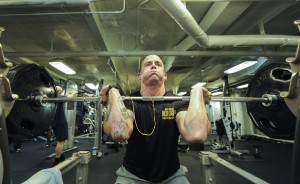Posted on April 01, 2016 by Kate Halsall
Honestly, if I had been asked this last week it would have been on my strange questions blog. But this was asked on Monday and as weird as it sounds ‘how should I breathe when exercising’ is a very valid question! Breathing in and out is a no brainer – we do it automatically. But when it comes to exercise, are we breathing in through our noses and out through our mouths, should we be holding our breath during certain exercises, or should we be breathing in and out through our nose? Regardless of how you do it, if you can get it right you really improve your productivity during your workouts. So how do you breathe when exercising? Here are some tips:
- Don’t hold your breath! Whilst holding your breath can help brace your core and therefore help to stabilise you, it can also cause dizziness because it affects the return of blood to the heart and raise your blood pressure. On this note though, if you are holding your breath when bracing your core you need to ask whether you’re using the breathing muscles or core muscles to stabilise you.
- There’s no immediate rush! The number of personal training clients who say to me they struggle getting their breathing right when they run….there is no immediate rush to get your breathing consistent – as long as you’re still breathing. Once your body gets over the shock of a running the breathing will settle down – I promise! To overcome this make sure you warm up properly (see point 5). Realistically, to avoid getting dizzy or panicked, you do need to get the breathing consistent. Personally, I try and time the breathing to match every couple of steps I take (not every step otherwise I’d by hyperventilating thoughout my 5ks!). Jenny count’s her breaths so she keeps her breathing regular.
- Different exercise will make you breathe differently! The way we breathe when we run or swim is very different to how we breathe when lifting weights for example. For weight training, one way to regulate your breathing would be to breathe out on the pressing or pushing phase (the exertion phase) of the lift and breathe in on the return back to the start position. For swimming you will get a better body position if you can breathe out of your mouth and nose. Yoga and Pilates actually teach breathing exercises for those types of classes to ensure that you’re working correctly.
- There are no hard fast rules! Breathing is ultimately personal preference. If you prefer to breathe in through your nose and out through your mouth so be it! Don’t over think it as that will not only distract you from the exercise you are performing but also remove the enjoyment of that exercise.
- Warm up Ever gone out for a run or into a class without warming up and felt like you’re heart is about to burst out of your chest and you can’t catch your breathe? Well this is because you haven’t warmed up correctly. A thorough warm up will gradually increase both your heart and breathing rate so you should avoid feeling like your lungs are going to explode!
- If all else fails – just keep breathing!!


